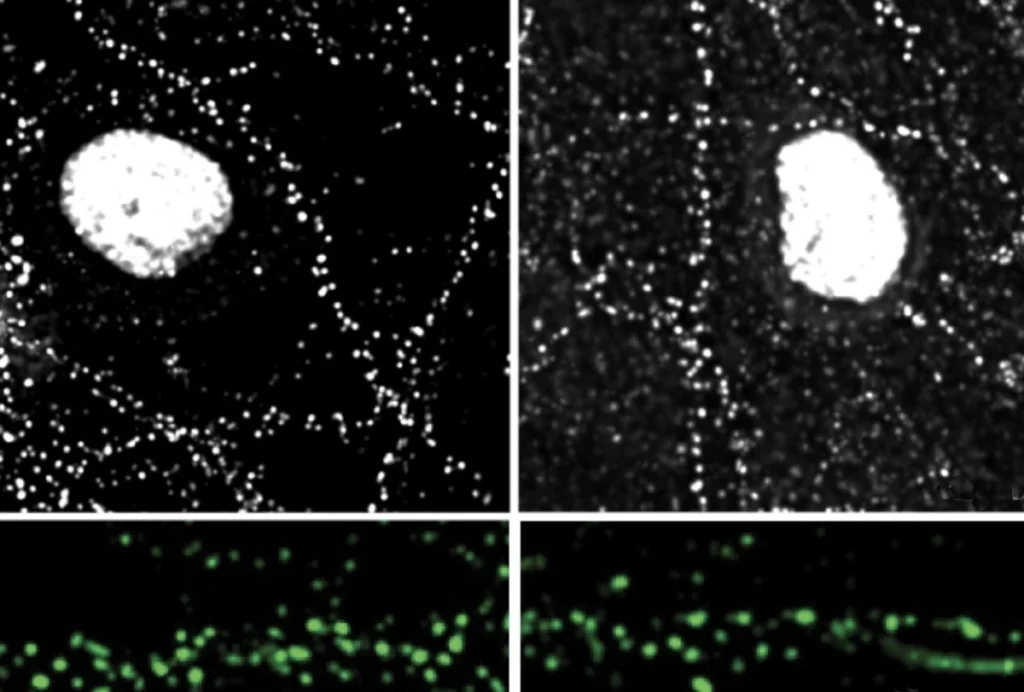Basic research involving two compounds that activate serotonin receptors could become more difficult to conduct under a new policy proposed late last year by the U.S. Drug Enforcement Agency (DEA), according to University of Oregon professor of neuroscience Shawn Lockery and other researchers.
The proposed rule would classify the compounds — 2,5-dimethoxy-4-iodoamphetamine (DOI) and 2,5-dimethoxy-4-chloroamphetamine (DOC) — as Schedule I controlled substances, which are considered to have no accepted medical use and a high potential for misuse. The agency proposed the rule on 13 December and accepted public comments on it until 12 January.
If the agency finalizes the rule, scientists who want to use the compounds in their studies will have to register with the DEA and often the state— a process that can take months — and comply with strict labeling, storage and security protocols. It is still unclear, though, if or when the rule change might happen: In an email to The Transmitter, a spokesperson for the agency said they were unable to comment beyond the proposal published in the Federal Register.
Several scientists told The Transmitter that the regulation could stifle new discoveries about serotonin signaling and pose problems for labs that have routinely relied on DOI, one of the compounds, in their studies.
“The simple way to put it is that it would be a great inhibition to high-risk exploratory research,” Lockery adds.
N
euroscientists have used DOI for decades to investigate serotonin receptors and their function in the brain.“There is a history of about 20 or 30 years of research, probably on the order of several hundred papers, using DOI just as a basic science tool to study brain function,” says Alex Kwan, associate professor of biomedical engineering at Cornell University, who studies the molecular mechanisms of psychoactive drugs such as ketamine and psilocybin.
One of the characteristics that makes DOI so useful is its high specificity for the serotonin receptor; the specificity is so high, in fact, that DOI has been used as a radiotracer in positron emission tomography (PET) imaging studies, says Raul Ramos, a postdoctoral researcher at the University of California, Berkeley. “We are talking about a compound that can target a receptor at the molecular level to a very high degree. That’s really valuable.”
Ramos works with DOI to investigate how psychedelics change somatosensory perception at the cellular level. The drug is not currently scheduled, so he can simply order it when he needs it. Needing a Schedule I license would slow that process, and he would also have to inform the DEA about any experiments using the compound, he says.
“When it’s a Schedule I substance, you don’t have that breathing room for exploration. And I feel that’s the kind of room that science and creativity thrives in,” Ramos says.
T
his is not the first time the DEA has tried to restrict DOI and DOC. In April 2022, the agency attempted to reclassify them as Schedule I drugs, but it withdrew the proposal four months later.Both proposals have received dozens of public comments from people who oppose the rule, many of them scientists. “DOI and DOC do not have ‘high potential for abuse’ and are used extensively for research in the scientific community,” according to a 12 January letter from the American Society for Pharmacology and Experimental Therapeutics (ASPET), which counts 4,000 basic and clinical scientists among its members. “ASPET feels that the inclusion of DOI and DOC on the Schedule I will create unintended administrative burden and chill scientific research and discovery.”
In its proposal, the DEA says that DOI and DOC are chemical analogs of the Schedule I hallucinogen 2,5-dimethoxy-4-methylamphetamine (DOM), and that they share mechanisms of action with and produce similar hallucinogenic effects as DOM and other Schedule I psychedelics, including lysergic acid diethylamide (LSD) and dimethyltryptamine (DMT). It also says that data from law enforcement seizures and case reports indicate that some people use DOI and DOC recreationally.
The fact that two substances resemble chemically is not enough to infer that they can be equally abused, says Charles Nichols, associate professor of pharmacology at Louisiana State University. “Just because a drug looks 80 to 90 percent similar to another drug, it doesn’t mean it has the same pharmacology or the same risks associated with it.”
Anecdotal “trip reports” and some research suggest DOI’s effects are unpleasantly long, which is why some scientists, Nichols included, are skeptical that people use them for recreational reasons. “In humans, [DOI’s] behavioral effects last about 30 to 36 hours,” he says, “So I would imagine people don’t want to be in some parallel reality for 36 hours.”
Only three deaths are associated with DOC and none with DOI, according to the new proposal. It also states that the National Forensic Laboratory Information System, the DEA program that identifies drugs seized via law enforcement operations, has 790 reports for DOC and 40 for DOI over 17 years, from 2005 to 2022. By way of comparison, the same program found 2,727 reports for LSD and 3,265 for MDMA in 2022 alone.
The DEA declined to share any information about the timeline for its decision. In the meantime, some groups — such as Students for Sensible Drug Policy, which is opposed to the potential change — have requested a hearing with the DEA. If the hearing is granted, it would likely happen within one year of the proposal’s release, according to Matt Zorn, a lawyer who challenged the scheduling of other psychedelics in 2022. To build their case, the group is trying to engage with more researchers who use DOI and DOC in their studies, says Elijah Ullman, a doctoral student at Emory University and chair of the science policy council of the organization.
“We want to make a cohesive argument that drug scheduling for DOI and DOC is going to be prohibitive to research,” he says.



